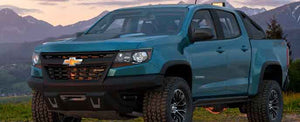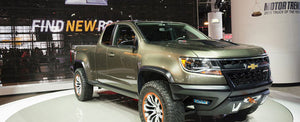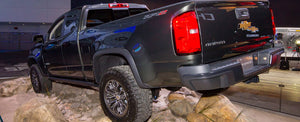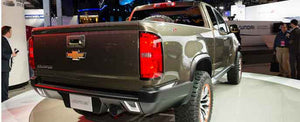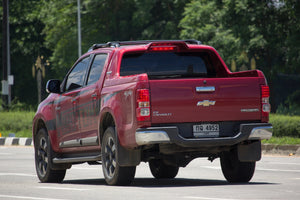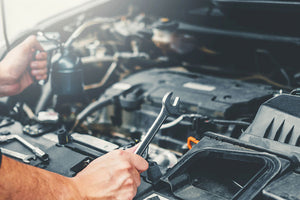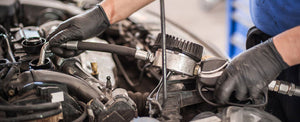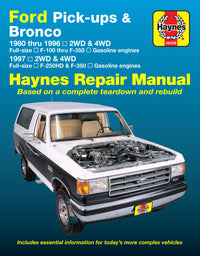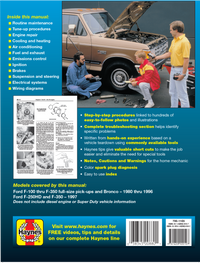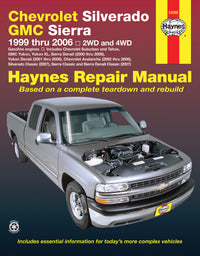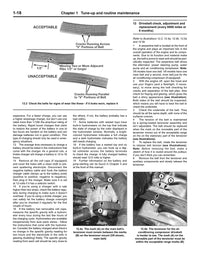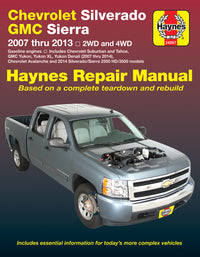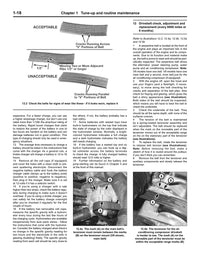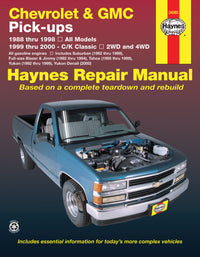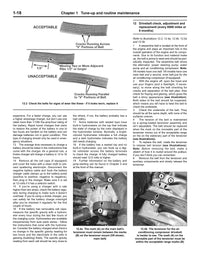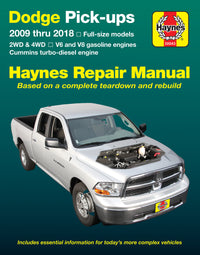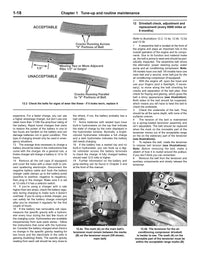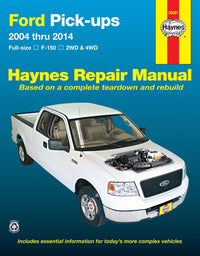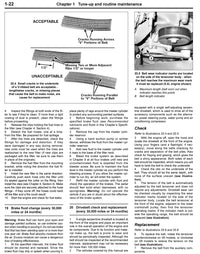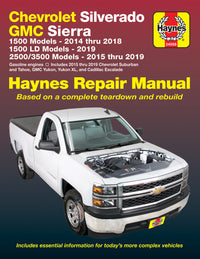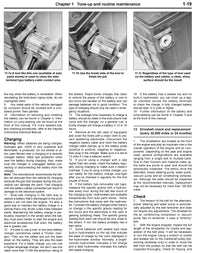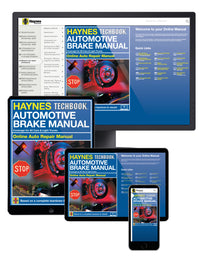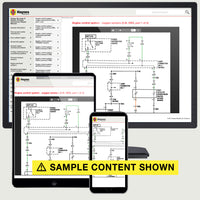Few trucks wear this many hats this well. From commuter runabout to fleet mule, from desert trail rig to tow-ready family hauler, the Chevrolet Colorado has spent two decades proving that midsize doesn’t mean middle‑of‑the‑road. If you’re the kind of owner who keeps gloves behind the seat and a socket set in the bed box, this is your truck.
As the Haynes Editorial Team, we’ve drained transmissions in gravel lots, swapped fuel filters at trailheads, and chased electrical gremlins through salt‑belt frames on more Colorados than we can count. The platform rewards the owner who stays ahead of maintenance—and punishes the one who waits for warning lights.
Why the Colorado Became a DIY Favorite
- Sized for real garages and urban driveways.
- Enough tow rating to move toys (boats, side‑by‑sides, pop‑ups).
- Broad trim walk: work truck to ZR2 trail weapon.
- Diesel torque option (Gen 2) and high‑output TurboMax (Gen 3) keep things interesting.
- Parts availability + GM commonality = affordable repairs.
“If you can change oil and follow torque specs, you can keep a Colorado going well past 200K miles. The manual just makes it easier.” — Haynes Editorial Team
How You Use It Changes What Breaks
- Daily Driver / Light Duty
- Work Truck / Fleet / Contractor
- Weekend Towing
- Overlanding / Off‑Grid Travel
- Rock Crawling / Desert Play (ZR2, lifted builds)
| Driving Style | Maintenance Topics |
|---|---|
| Daily Driver / Light Duty | Moisture/fuel dilution in oil from short trips; cabin filter clog; surface brake rust = pulsing. |
| Work / Fleet | Accelerated air filter loading; idling = fuel dilution; front end & leaf spring bushing fatigue; battery cycling. |
| Weekend Towing | ATF heat, diff fluid breakdown, trailer wiring corrosion in splices; brake fade on grades. |
| Overlanding / Off‑Grid | Dust‑loaded MAP/MAF sensors; fuel contamination; axle & transfer case water ingress; added electrical load. |
| Rock / Desert | Skid plate impacts hiding damage; DSSV leak checks (ZR2); CV boots torn; tire/TPMS recalibration after upsizing. |
“It’s not just what breaks—it’s when, and how quickly you catch it. Usage-based maintenance with your manual is the cheapest insurance you’ll ever buy.” — Haynes Editorial Team
| Generation | US Model Years | Key Powertrains | Stand‑Out Traits | DIY Watch‑Fors |
| 1st Gen GMT355 | 2004–2012 | 2.8/2.9L I4 • 3.5/3.7L I5 • 5.3L V8 (late) | Compact footprint, simpler electronics, fleet favorite | Valve cover leaks → coil misfires, front end wear, salt‑belt frame & brake line rust, HVAC blower resistors |
| 2nd Gen RG | 2015–2022 | 2.5L I4 • 3.6L DI V6 • 2.8L Duramax | True midsize payload, ZR2 off‑road trim, diesel tow efficiency | 8‑spd torque converter shudder, DEF/fuel filter discipline (diesel), DSSV shock inspection, water‑crossing fluid changes |
| 3rd Gen (TurboMax Era) | 2023–Present | 2.7L Turbo (multi‑output → 2025 TurboMax single spec) | Crew‑cab only, tech‑heavy dash, drive modes, StowFlex tailgate, ZR2 Bison | Turbo heat management, software‑driven service resets, wiring care after trail mud, underbody camera cleaning |
1st Generation Colorado (GMT355) 2004–2012 - Primed for DIY
Why the 1st Gen still matters for DIYers
Affordable, wrenchable, and common in every salvage yard in North America. If you need a small pickup you aren’t afraid to scratch—and you’re okay doing some weekend upkeep—this is prime DIY territory.
How Usage Drives Wear
- Stop‑Start & Short‑Trip Fleet Miles: Delivery and municipal use meant engines rarely reached full temp, encouraging moisture in crankcase oil and exhaust systems. Result: sludging, shortened spark plug life, and accelerated exhaust corrosion.
- Road Salt & Chemical De‑icers: Northern fleets exposed frames, brake lines, fuel lines, and electrical connectors to corrosive environments. Corrosion‑related brake and lighting faults became common complaint categories as trucks aged.
- Light Towing / Hauling Over Max Payload: Smaller I4/I5 engines often worked near the top of their torque band when towing landscaping trailers or small campers, raising transmission temps and stressing cooling systems—especially when radiators and coolers clogged with debris.
- Aging Electrical Components: A widespread brake‑lamp switch contamination failure triggered a multi‑state recall (safety + cruise‑control inop risk). Aging connectors in high‑salt zones amplified the issue.
Known Issues
- Coil‑on‑plug misfires from oil intrusion (valve cover gasket seep).
- Timing chain & cam phaser noise on higher‑mile I5s if oil neglected.
- Front lower ball joints & control arm bushings wear under plow or rough‑road duty.
- HVAC blower resistor failures → dead fan speeds.
- Frame & brake line corrosion in salt states—inspect before towing.
Smart Preventive Moves
- Change oil on calendar time (not just miles) for short‑trip trucks.
- Flush brake fluid at purchase; lube bleeders.
- Clean throttle body & idle passages to cure unstable idle.
- Anti‑corrosion spray inside boxed frame rails yearly if you see winter salt.
DIY Wins with a Manual
A Haynes or Chilton manual shows interior trim clip locations, torque values on steering knuckles, and how to test blower resistors with a meter—exactly the stuff that saves broken plastics and repeat failures.
2nd Gen Colorado (2015–2022) — Bigger, Stronger, Diesel Option, ZR2 Fun
Powertrain Notes
- 2.5L gas I4: Basic, fleet‑friendly.
- 3.6L DI V6: Strong highway pull; mind oil quality & DI intake deposits.
-
2.8L Duramax diesel: Torque, engine braking, long range—if you keep filters fresh.
More capability means new ways to use the Colorado
- Higher Tow Loads: Max tow ratings jumped (up to 7,700 lbs when properly equipped). Owners actually used them, pushing automatic transmissions, cooling systems, and rear axles harder than Gen‑1 trucks typically saw.
- Mixed Duty Cycles: Many Colorados became daily drivers and weekend adventure rigs—long highway runs followed by dusty trailheads. That swing means fluids see heat cycling, and air filters load quickly.
- Diesel Adoption for Range & Torque: Duramax owners often racked up high‑mileage towing miles; DPF soot loading, DEF management, and fuel‑filter changes became real DIY needs.
- Electronics & Electric Power Steering: More driver‑assist content and electric steering added new maintenance/recall watchpoints.
How using your Colorado impacts your DIY to-do list
- 8‑Speed Auto Shudder (8L45/8L90 transmissions): Light‑throttle vibration; General Motors prescribes fluid exchange (updated Mobil 1 LV ATF HP).
- Diesel Fuel/Water Separation: Plugged filters means limp power; change this early in poor fuel regions; carry a spare.
- ZR2 DSSV Dampers: Inspect for oil film after hard off‑road hits; they’re rebuildable but pricey.
- Water Crossings: Replace axle/transfer case fluids if the breather gets submerged—milky oil equals bad news.
DIY knowledge you need
- DEF fill & system reset steps.
- Fuel filter change / prime sequence (diesel).
- Transfer case & diff fluid service with torque specs.
- Suspension torque patterns after lift or skid plate work.
- Your Haynes manual
3rd Gen Colorado (2023–Present) — TurboMax Tech & Trail Capability
The latest Colorado lands as crew‑cab short‑bed only, with a unified 2.7L turbocharged four offered in multiple outputs at launch and moving toward a single TurboMax high‑output spec for 2025. Inside: a big infotainment display, configurable drive modes, camera tech, and storage tricks like the StowFlex tailgate.
Real‑World DIY Maintenance Themes
- Turbo engines thrive on fresh, correct‑spec synthetic oil; follow severe interval if you tow or idle.
- Charge‑air plumbing and clamps should be inspected after off‑road impacts or tune installs.
- Software‑driven maintenance monitors assume “average” duty—contractor idle or desert dust means you reset based on hours.
- Underbody cameras & sensors hate mud—clean and dielectric‑grease connectors.
ZR2 / ZR2 Bison - A few extras for the DIYer
Off‑Road Usage Stress Points
- DSSV Dampers: Outstanding control but, like all performance shocks, benefit from periodic inspection for leaks, bushing wear, and shaft damage after hard use.
- Control Arms & Ball Joints: Lift + wider track increases leverage; inspect after each major trip.
- Skid Plates / Radiator & Cooler Packing: Mud and debris trap heat; clean to protect transmission & engine temps when crawling.
- Brake Line & ABS Lead Exposure: Articulation can tug lines; secure routing after aftermarket lift/armor installs.
DIY to-do
-
Check skid plates for bends that load the oil pan or crossmembers.
-
After rock hits, verify locker wiring and breather routing.
-
Re‑torque beadlocks (if equipped with aftermarket beadlock wheels) and recalibrate TPMS for oversized tires.
Your Colorado Off‑Road & Towing Pre‑Trip Checklist
Before You Roll:
- Confirm tire load rating vs trailer weight.
- Torque lug nuts; re‑check after 50 mi on wheel swaps.
- Inspect shocks/dampers for leaks (DSSV telltale ring).
- Verify diff & transfer case fluid level—especially post‑water crossing.
- Test trailer brake controller + 7‑pin wiring.
- Pack recovery gear that fits factory or aftermarket recovery points.
After the Trip:
- Wash radiator & intercooler cores from the front and back.
- Crack diff plugs—if fluid’s milky, change it.
- Inspect skid plates for hard contact; look behind for fluid seep.
- Lube U‑joints (if equipped with grease fittings) and check driveshaft slip yoke play.
Final Thought
A Colorado earns its dents honestly. It hauls lumber Monday, drags a trailer Friday, and spends Saturday buried to the frame in desert sand—then still gets you to work on Monday. Treat it right, feed it fluids, tighten what shakes loose, and it’ll repay you in miles of stories. Bring a Haynes or Chilton manual, and those stories won’t end in a tow bill.
"Haynes Manuals. DIY experts since 1960. We create manuals that pay for themselves and Show You How." Haynes Editorial Team

